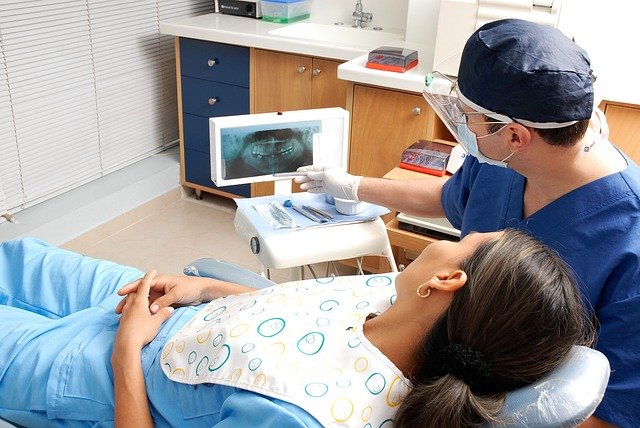Affordable Screwless Dental Implants: Benefits, Costs, and Advantages in the United States 2025
Screwless dental implants offer a natural-looking alternative to screw-retained implants, often favored by older adults. This article summarizes benefits, typical U.S. 2025 costs, procedure steps, suitability, and recovery expectations and affordability considerations to help seniors evaluate long-term tooth-replacement options.

Screwless dental implant options are gaining attention because they avoid prosthetic screws in the final restoration. Instead, they rely on one‑piece implants or precision friction (conometric) connections that hold crowns or dentures securely. For patients who want stable teeth with fewer small parts to maintain, these designs can be an appealing alternative to traditional screw‑retained restorations.
What Are Screwless Dental Implants?
“Screwless” refers to restorations that do not use a tiny prosthetic screw to retain the crown or denture. Two common approaches are used: - One‑piece implants: The post and abutment are a single unit (often zirconia or titanium). The crown is bonded to the abutment outside the mouth and then the assembly is seated, eliminating intraoral cement cleanup. - Conometric (friction‑fit) systems: Special abutments create a precise cone‑in‑cone connection so an overdenture seats firmly without visible screws. The implants themselves may have internal screws during surgery, but the final prosthesis snaps in via friction. These designs aim to reduce parts and potential screw‑loosening, while maintaining strong chewing function.
Major Benefits for Older Adults
Older adults often value reliability, comfort, and simplified care. Screwless systems can help by: - Reducing maintenance: No access holes to retighten and fewer components that can wear or loosen. - Improving hygiene access: Smooth, screw‑free surfaces can make daily cleaning easier, which is important for gum health. - Supporting bone health: Short or one‑piece options may help when bone volume is limited, potentially reducing grafting needs in some cases, depending on clinical evaluation. - Enhancing comfort: Conometric overdentures can feel stable without the click of clips or the taste of adhesives. As with any implant, candidacy depends on overall health, medications, bone quality, and habits such as smoking.
Average Costs and Affordability in the United States 2025
Actual fees vary by region, clinic expertise, imaging, materials, and whether bone grafting or extractions are needed. As a general overview in 2025: - Single tooth (screwless approach): Common totals range from about $3,500–$6,500 per tooth, including the implant post, abutment/connection, and final crown. - One‑arch removable overdenture on 2 implants: Approximately $6,000–$12,000 per arch. - Conometric overdenture on 4 implants: Often $10,000–$18,000 per arch, reflecting more implants and lab work. - Fixed full‑arch solutions: Frequently $20,000–$35,000 per arch, depending on materials and complexity. Insurance contributions differ widely; many plans offer partial coverage for portions such as extractions or crowns. Health savings or financing plans are commonly used to spread costs across manageable payments.
Procedure Steps and Healing Period
- Assessment and planning: A comprehensive exam, 3D imaging, and a review of medical history. For older adults, medication review (including blood thinners and osteoporosis drugs) is essential. A personalized plan considers bone volume, bite forces, and esthetics.
- Surgery: Placement of one‑piece implants or implants with conometric abutments. In some cases, a temporary tooth or denture is provided the same day to support appearance and function while healing begins.
- Healing: Typical integration is 8–12 weeks in the lower jaw and 12–16 weeks in the upper jaw. Timelines can vary based on bone density, systemic health, and whether grafting was required.
- Final prosthesis: For one‑piece designs, a custom crown is bonded to the abutment outside the mouth and then seated. For conometric overdentures, the lab crafts a denture that friction‑fits on the conical abutments without visible screws.
Durability and Care Recommendations
With consistent home care and professional maintenance, implant restorations are designed for long‑term service. To support longevity: - Clean daily: Use a soft brush, low‑abrasive toothpaste, and interdental aids or a water flosser around abutments and under overdentures. - Maintain checkups: Professional cleanings and evaluations every 3–6 months help monitor gum health and bite forces. - Protect against overload: Night guards are helpful for clenching or grinding. Report any looseness or sore spots promptly. - Lifestyle factors: Smoking cessation and well‑managed chronic conditions support better outcomes over time.
Here is a pricing snapshot of commonly used screwless or friction‑fit systems. Costs reflect typical U.S. clinical fee ranges for the complete patient treatment using these systems and can vary by location and case complexity.
| Product/Service | Provider | Cost Estimation |
|---|---|---|
| Locking‑taper single‑tooth restoration | Bicon Dental Implants | $3,500–$6,500 per tooth |
| One‑piece zirconia single‑tooth restoration | CeraRoot | $4,000–$7,000 per tooth |
| Conometric overdenture on 4 implants (one arch) | Dentsply Sirona ATLANTIS Conus | $10,000–$18,000 per arch |
| SynCone‑style overdenture on 4 implants (one arch) | Dentsply Sirona (ANKYLOS SynCone concept) | $10,000–$18,000 per arch |
Prices, rates, or cost estimates mentioned in this article are based on the latest available information but may change over time. Independent research is advised before making financial decisions.
Durability and Care Recommendations
Screwless approaches aim to minimize small‑part complications over the years. However, all implants benefit from mindful care. Expect periodic professional checks of soft tissues, bite, and prosthetic fit. For conometric overdentures, your dentist may occasionally adjust retention to maintain comfortable snap‑in stability as components wear. For one‑piece designs, extra‑oral bonding of the crown can reduce risks linked to excess cement around the gums.
A well‑planned case, meticulous hygiene, and scheduled maintenance help protect your investment, regardless of material choice (titanium or zirconia) or retention style.
Conclusion
Screwless implant solutions combine stable function with streamlined maintenance, which can be especially practical for older adults who prefer fewer components and straightforward hygiene. Understanding how these systems work, the typical U.S. costs in 2025, the treatment timeline, and long‑term care needs can help patients have informed conversations with local services about suitability and expectations.
This article is for informational purposes only and should not be considered medical advice. Please consult a qualified healthcare professional for personalized guidance and treatment.




